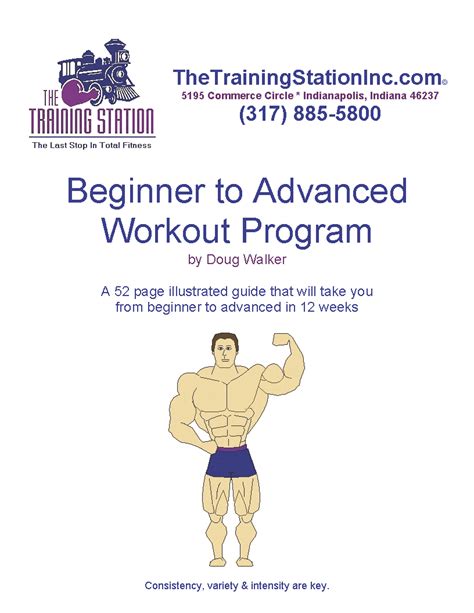How to optimize your workout for peak strength and daily performance?

Achieving peak physical strength and sustaining high daily performance isn’t just about showing up to the gym; it’s about intelligent, strategic optimization of every aspect of your training and recovery. Whether you’re an athlete, a dedicated lifter, or simply someone looking to feel stronger and more energetic throughout your day, understanding the principles of workout optimization is crucial. This article will guide you through the key pillars to transform your routine from merely good to exceptional.
The Foundations of Strength and Performance
At the core of any effective strength program lies progressive overload—the gradual increase of stress placed upon the musculoskeletal system. This can be achieved by increasing weight, reps, sets, decreasing rest time, or improving technique. Coupled with this is the absolute necessity of proper form. Lifting with correct technique not only prevents injury but also ensures that the target muscles are effectively engaged, maximizing growth and strength gains. Without these fundamentals, any advanced technique will be built on shaky ground.
Consistency is also paramount. Sporadic workouts yield sporadic results. A consistent routine, even if it starts small, is far more effective than intense but infrequent sessions.

Key Training Principles for Optimization
To truly optimize your training, several principles come into play. Specificity dictates that you should train in a way that is specific to your goals. Want to lift heavier? Focus on heavy lifting. Want to run faster? Incorporate speed work. Periodization involves structuring your training into cycles (macrocycles, mesocycles, microcycles) to manage fatigue, prevent plateaus, and ensure progressive adaptation. This often includes varying intensity and volume over time.
Furthermore, prioritizing compound movements (squats, deadlifts, bench presses, overhead presses, rows) is essential. These exercises work multiple muscle groups simultaneously, eliciting a greater hormonal response and building foundational strength that translates well to daily activities and athletic performance. Isolation exercises have their place, but compound movements should form the backbone of your program.
Integrating Advanced Techniques
Once the basics are mastered, you can strategically incorporate advanced techniques to break through plateaus and stimulate new growth. Techniques like supersets (performing two exercises back-to-back with no rest), drop sets (reducing the weight immediately after reaching failure and continuing reps), and tempo training (controlling the speed of each rep phase) can increase intensity and time under tension, leading to greater muscular hypertrophy and endurance. However, these should be used judiciously to avoid overtraining.

The Crucial Role of Recovery
Your muscles don’t grow in the gym; they grow when you recover. Neglecting recovery is one of the fastest ways to stall progress and invite injury. Sleep is perhaps the most undervalued recovery tool. Aim for 7-9 hours of quality sleep per night, as this is when growth hormone is released and cellular repair takes place. Active recovery, such as light cardio, stretching, or foam rolling, can improve blood flow and reduce muscle soreness without adding excessive stress.
Listening to your body is also key. Incorporate deload weeks when needed, where intensity or volume is significantly reduced, allowing your body to fully recuperate and come back stronger.

Fueling Your Body: Nutrition for Peak Performance
Just as a high-performance car needs premium fuel, your body needs optimal nutrition to perform at its best. A balanced intake of macronutrients (protein, carbohydrates, and fats) is non-negotiable. Protein is vital for muscle repair and growth, carbohydrates provide energy for workouts, and healthy fats support hormone production and overall health. Hydration is equally critical; even slight dehydration can significantly impair performance.
Consider nutrient timing, especially around your workouts, to maximize energy availability and recovery. A pre-workout meal rich in complex carbs and some protein, followed by a post-workout meal with protein and simple carbs, can make a significant difference.

Mental Fortitude and Consistency
Beyond the physical, mental strength plays a profound role in optimization. Setting clear, achievable goals, maintaining a positive mindset, and cultivating discipline are powerful drivers of success. Track your progress diligently; seeing your improvements can be a huge motivator. Understand that plateaus are normal, and view them as opportunities to re-evaluate and adjust your strategy, rather than reasons to give up.
Consistency, above all, is the secret ingredient. Small, consistent efforts compound over time into significant results. Your daily performance is a reflection not just of your last workout, but of your cumulative dedication.

Conclusion
Optimizing your workout for peak strength and daily performance is a multifaceted journey that combines intelligent training, dedicated recovery, meticulous nutrition, and unwavering mental resolve. By consistently applying principles of progressive overload, specificity, periodization, and prioritizing rest and proper fueling, you can unlock your full potential. Embrace the process, listen to your body, and commit to the long-term pursuit of a stronger, more capable you.







